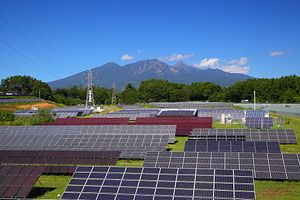Since the disaster at its Fukushima Daiichi Nuclear Power Plant in March 2011, Japan has faced a highly uncertain energy future. Despite the government’s best attempts to begin restarting the country’s 48 nuclear reactors, popular sentiment has remained opposed to any such generalized restart. As a result, and despite the fact that some of its reactors may indeed come back online over the next few years, Japan is planning for a future where nuclear energy no longer plays a significant role in its energy mix.
The country’s own geology is a large part of this new direction in energy policy. While the government’s Nuclear Regulation Authority (NRA) has set much more stringent guidelines regarding safety measures at nuclear plants, and Japan has one of the most sophisticated systems in place for detecting geological activity like earthquakes and volcano eruptions, the inability to predict the eruption of Mount Ontake on September 27 highlighted the limited utility of these safety measures. Indeed, Toshitsugu Fujii, a volcanologist and professor emeritus at the University of Tokyo told Reuters last Friday that the Tohoku Earthquake of 2011 may end up causing larger and more frequent volcanic eruptions. He said that “The 2011 quake convulsed all of underground Japan quite sharply, and due to that influence Japan’s volcanoes may also become much more active.” He added that, “It has been much too quiet here over the last century, so we can reasonably expect that there will be a number of large eruptions in the near future.”
As a result of recent reports like this, Japan appears to be heading toward a two pronged approach: a diversification of its LNG sourcing over the short to medium term while planning for greater and more efficient use of renewable energy. While LNG is already a large part of Japan’s energy mix, it plans to reduce its dependence on the Middle East and focus more on cheaper supplies from North America and Australia. By 2020, Japan plans to import 70 percent of its LNG needs from these sources, with 40 percent coming from fields in Australia that Japan is currently helping to develop, and the rest from the U.S. and Canada. Japan hopes to reduce costs by importing from these closer and more stable sources, with the additional benefit of U.S. imports costing about 20 percent less than its current LNG.
Japan’s plans for a greater percentage of renewable energy will be more difficult to implement, yet it has already made significant progress. After instituting a Feed In Tariff system for renewable resources in 2012 to increase the percentage of this energy source by obligating utilities to buy the energy at set prices (which were transferred to consumers), the government hoped that renewables would contribute 30 percent of Japan’s energy usage by 2030. However, the plan has hit a significant snag as utilities claim this increase in renewables is unstable given the current energy grid, and could cause blackouts.
A sub-committee for the economy, trade and industry ministry is attempting to work out a solution. The would entail making solar energy prices under the FIT more competitive for the utilities, which would slow the rate that new solar sources come online. The government is also considering putting a cap on the cost that could be passed on to the consumer, as at current rates of new solar development that could reach 10,000 yen ($93) per household. These two policies would slow the rapid development that has occurred in solar energy at the expense of other sources like wind and hydroelectric, which may lead to a more balanced renewable energy base in the future.
The economy, trade and industry ministry on Tuesday is also proposing another idea to reduce overall energy usage. The “negawatt” exchange system would allow utilities to contract with businesses and households to agree to ways to conserve energy usage. Through methods such as lowering air-conditioning usage and installing more energy efficient lighting, users will effectively be “selling” utilities back their energy at roughly 10 to 100 yen per kilowatt hour. The government expects the system could begin as early as 2017, with businesses being brought in first and later households with the use of smart meters. A similar system is already in place in the U.S., where “power equal up to 10% of demand is said to be traded.”
































